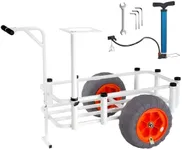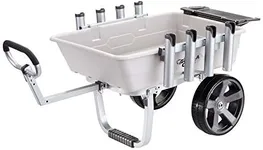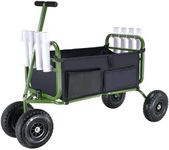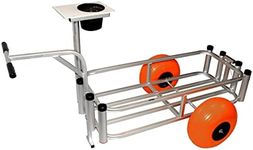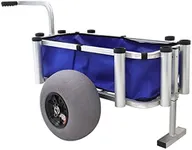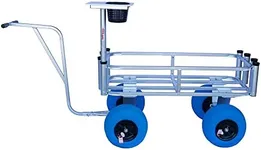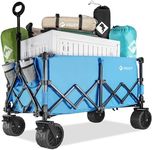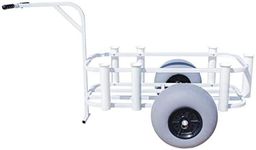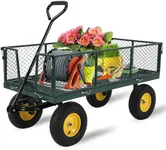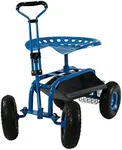Buying Guide for the Best Fishing Carts
Choosing the right fishing cart can make your fishing trips more enjoyable and efficient. A fishing cart helps you transport your gear easily, especially when you have to cover a significant distance to your fishing spot. When selecting a fishing cart, consider the terrain you'll be navigating, the amount of gear you typically carry, and any specific features that might enhance your fishing experience. Here are some key specifications to consider when choosing a fishing cart.Weight CapacityWeight capacity refers to the maximum amount of weight the cart can carry. This is important because you need a cart that can handle all your gear without breaking or becoming difficult to maneuver. Weight capacities can range from around 50 pounds to over 200 pounds. If you carry a lot of heavy equipment, such as coolers filled with ice and fish, opt for a cart with a higher weight capacity. For lighter loads, a lower capacity cart will suffice.
Wheel TypeThe type of wheels on a fishing cart affects its ability to navigate different terrains. There are generally two types of wheels: pneumatic (air-filled) and solid. Pneumatic wheels provide better shock absorption and are ideal for rough or sandy terrains, but they can puncture. Solid wheels are puncture-proof and require less maintenance, making them suitable for smoother surfaces like piers or paved paths. Choose the wheel type based on the terrain you most frequently encounter.
Frame MaterialThe frame material of a fishing cart determines its durability and weight. Common materials include aluminum, steel, and plastic. Aluminum is lightweight and resistant to rust, making it a good choice for saltwater environments. Steel is very durable but heavier and can rust if not properly maintained. Plastic frames are lightweight and rust-proof but may not be as durable as metal options. Consider the environment you'll be fishing in and how much weight you're comfortable handling when choosing the frame material.
Storage and CompartmentsStorage and compartments refer to the design and number of spaces available for organizing your gear. Some carts come with multiple compartments, rod holders, and even cooler mounts. This is important for keeping your gear organized and easily accessible. If you carry a lot of different items, look for a cart with ample storage options. If you prefer a simpler setup, a cart with fewer compartments might be more suitable.
Portability and FoldabilityPortability and foldability are important for transporting and storing your fishing cart when not in use. Some carts can be folded down to a compact size, making them easier to fit in your vehicle or store at home. If you have limited storage space or need to transport the cart frequently, look for a model that folds easily and is lightweight. If storage space is not an issue, a more robust, non-folding cart might be a better option.
Ease of AssemblyEase of assembly refers to how simple it is to put the cart together. Some fishing carts come pre-assembled, while others require some setup. This is important if you prefer a hassle-free experience or if you’re not particularly handy with tools. If you want to start using your cart right away, look for one that requires minimal assembly. If you don’t mind spending a bit of time setting it up, you can consider carts that might offer more customization options but require more assembly.

